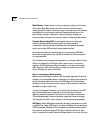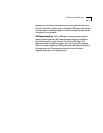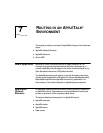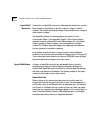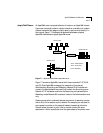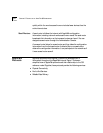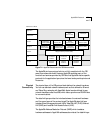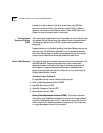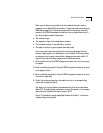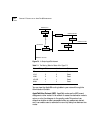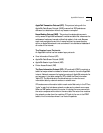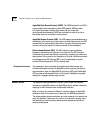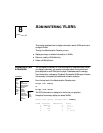
7-6 CHAPTER 7: ROUTING IN AN APPLETALK® ENVIRONMENT
because it is closely related to the Ethernet and token ring LAPs. This
protocol is usually included in the definition of each LAP, so it does not
appear in the reference model. See the section “About AARP” later in this
chapter for more information about this protocol.
The Datagram
Delivery Protocol
(DDP)
The network layer accepts data from the layers above it and divides the data
into packets that can be sent over the network through the layers below it.
The Datagram Delivery Protocol (DDP) transfers data in packets called
datagrams.
Datagram delivery is the basis for building other AppleTalk services, such as
electronic mail. The DDP allows AppleTalk to run as a process-to-process,
best-effort delivery system in which the processes running in the nodes of
interconnected networks can exchange packets with each other.
End-to-End Services The transport layer and the session layer provide end-to-end services in the
AppleTalk network. These services ensure that routers transmit data
accurately between one another. Each layer includes four protocols that
work together to support these services. This section describes these
protocols and provides more detail for those that you can view using the
LANplex Administration Console.
Transport Layer Protocols
An AppleTalk internet has four transport layer protocols:
■ Routing Table Maintenance Protocol (RTMP)
■ AppleTalk Echo Protocol (AEP)
■ AppleTalk Transaction Protocol (ATP)
■ Name Binding Protocol (NBP)
Routing Table Maintenance Protocol (RTMP). The protocol maintains
information about AppleTalk addresses and connections between different
networks. It specifies that each router 1) learns about new routes from the
other routers and 2) deletes routes after a certain period if the local router
no longer broadcasts the route to the network.



